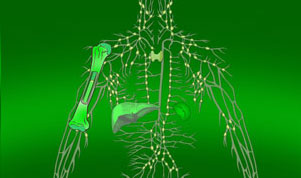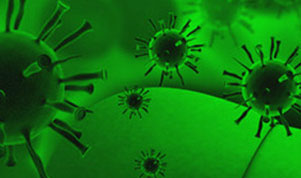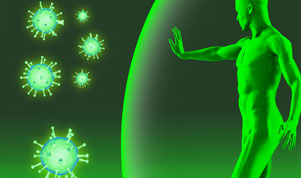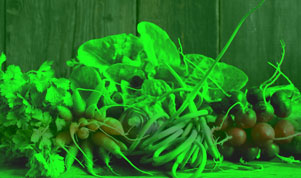ETIOLOGIA EPIDEMII ZAOSTRZEŃ ASTMY
Alergeny wziewne, zanieczyszczenie powietrza i ich interakcja z klimatem mają wpływ na zaostrzenie astmy. Sears and Johnston uważają jednak, że decydujący wpływ na zaostrzenie astmy ma powrót do szkoły, za czym przemawia wyjątkowo stały termin wystąpienia szczytu zaostrzeń w stosunku do rozpoczęcia roku szkolnego. Wykazano, że infekcje wirusowe, zwłaszcza rinowirusowe, są powiązane z ok. 80% przypadków zaostrzenia astmy w tej grupie wiekowej wczesną jesienią.
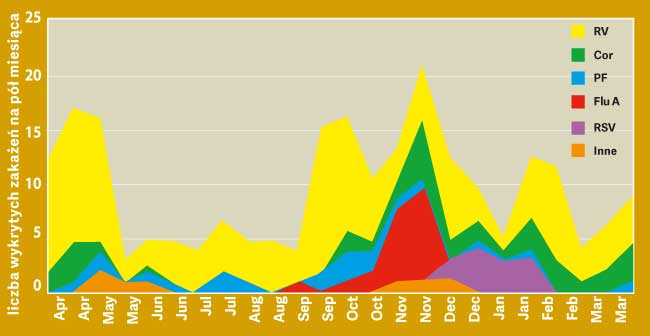
Rycina: liczba i etiologia wykrytych zakażeń wirusowych stwierdzanych w ciagu roku, w rozbiciu na okresy półmiesięczne. Legenda: RV - rinowirusy, Cor - koronawirusy, PF - wirusy para-grypy, Flu-A - wirusy grypy A, RSV - respiratory syncytial virus = wirusy RS.
Sprawdzono przypadki dzieci zgłaszających się do oddziałów nagłej pomocy z powodu zaostrzenia astmy w głównych miastach Kanady, w ciągu 3 tygodni września 2001. Zastosowano badanie mikrobiologiczne śluzówki nosa z użyciem techniki PCR* ze specyficzną identyfikacją ludzkich rinowirusów, adenowirusów, wirusów grypy A i B, wirusów paragrypy od 1 do 3, koronawirusów 229E i OC43, wirusów RS A i B oraz Chlamydia pneumoniae i Mycoplasma pneumoniae. Wyniki przedstawiono na powyższej rycinie.
* PCR ang. polymerase chain reaction technique - technika reakcji łańcuchowej polimerazy. Jest to najczulszy diagnostyczny test mikrobiologiczny, pozwalający na wykrycie DNA lub RNA wirusa, bakterii lub innego organizmu. Ta niezwykle czuła metoda analityczna stosuje zaawansowane techniki biologii molekularnej.
DLACZEGO POWRÓT DO SZKOŁY PRZYCZYNIA SIĘ DO EPIDEMII?
Dzieci, które powracają do szkoły po letnich wakacjach, są narażone na infekcje wirusowe, najczęściej na rinowirusowe, po okresie, gdy nie były one na nie eksponowane przez wiele tygodni. Późne lato jest okresem wysokiego poziomu alergenów środowiskowych i są one powszechne w środowisku szkolnym. Powrót do szkoły to również okres dużego stresu, który może pogarszać objawy astmy u dzieci. Zakażenie wirusowe jest bezpośrednim czynnikiem wyzwalającym zaostrzenia astmy, to prawdopodobnie połączenie tych wszystkich czynników jest przyczyną wrześniowej epidemii.
Sezonowość infekcji rinowirusowych końca lata i początku jesieni musi mieć pewną zmienność w czasie. Należałoby się zatem spodziewać pewnej zmienności w czasie wrześniowych epidemii. Jednak szczyt liczby hospitalizacji w okresie 13 lat obserwacji autorów pojawiał się niezmiennie w 3 tygodnie od rozpoczęcia szkoły, co sugeruje, że rozpoczęcie szkoły stanowi per se niezbędny warunek przyspieszenia transmisji infekcji rinowirusowych na poziom epidemiczny. Hipoteza ta jest wzmocniona danymi z tych krajów, w których szkoła zaczyna się w innym terminie. Dla większości dzieci w Kanadzie i Anglii szkoła rozpoczyna się po letniej przerwie wakacyjnej zwykle 1 września. Natomiast w Szkocji i Szwecji szkoła rozpoczyna się zwykle w 3 tygodniu sierpnia. Największy szczyt hospitalizacji z powodu zaostrzenia astmy we wszystkich tych 4 krajach pojawia się dokładnie w 3 tygodnie po powrocie do szkoły, niezależnie od różnic w terminie letnich wakacji, co przedstawiono graficznie na poniższej rycinie.
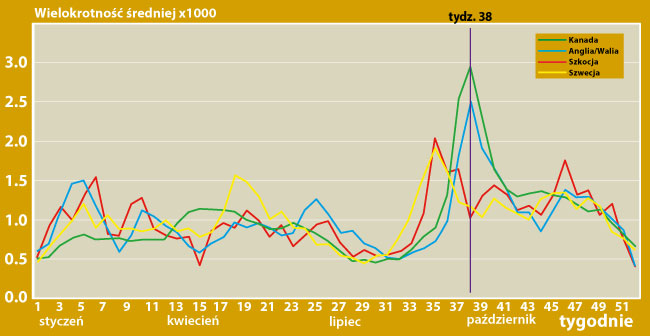
Szczyt hospitalizacji odnotowywany w Szkocji i Szwecji jest niższy niż w Kanadzie i Anglii, co może sugerować, że warunki do transmisji zakażeń rinowirusowych w sierpniu w tych dwóch krajach są mniej korzystne niż te w Kanadzie i Anglii we wrześniu.
CZY I JAK MOŻNA SIĘ ZABEZPIECZYĆ?
Phytomedica oferuje sprawdzone preparat wzmacniający odporność zarówno dzieci i młodzieży jak i osób dorosłych. Jest to Immulina w postaci smacznego syropu dla małych dzieci lub osób, które mają problem z połykaniem kapsułek oraz w postaci kapsułek dla młodzieży i dorosłych.
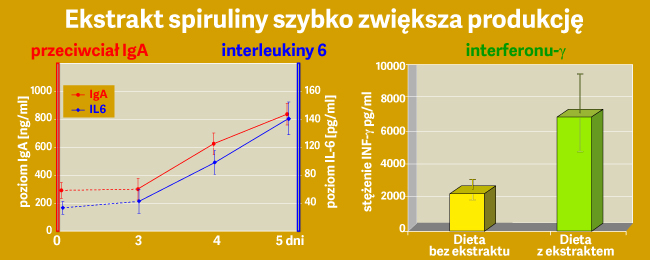
Badania potwierdziły, że składnik aktywny obu preparatów - czyli specjalny ekstrakt Spirulina platensis (LECPEEN) uruchamia mechanizmy odporności nieswoistej (innate immunity) czyli odporności, która nie zagraża uruchomieniem przewlekłych procesów immunologicznych. Do poprawy odporności dochodzi szybko, bo już w ciągu kilku (dni 4 - 5 dni) od rozpczęcia kuracji. Objawia się to zwiększeniem produkcji przeciwciał ochronnych dla błon śluzowych (IgA), wzrost produkcji białek (cytokin, zwłaszcza IL-6) biorących udział w precesach odpornościowych oraz stymuluje szereg innych substancji (limfokiny, IFN-γ,) oraz pobudza komórki układu odporności (m. in. limfocyty NK).
Wniosek: warto wzmacniać odporność dzieci, już od początku września!
PIŚMIENNICTWO (w jęz. ang.):
- Sears MR, Johnston NW, Understanding the September asthma epidemic. J.Allergy Clin.Immunol. 2007; 120: 526-9.
- Johnston NW, Johnston SL et al. The September epidemic of asthma exacerbation in children, search for etiology. J.Allergy Clin.Immunol. 2005; 112: 132-8.
- Johnston NW and Sears MR, The epidemiology of asthma exacerbations. Thorax 2006; 61: 722-8.
- Johnston NW, Johnston SL, et al The September epidemic of asthma hospitalization: School children as disease vectors. J Allergy Clin.Immunol.2006;117:557-62.



